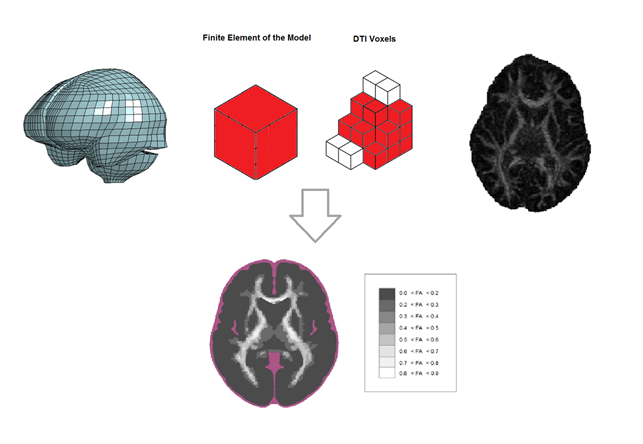Multiscale Modeling to Prevent Traumatic Brain Injuries
Head and neck injuries due to traffic accidents, at work and during leisure, are major diseases in Sweden and worldwide. Consequences of head injuries are not limited to the victim alone but have impact on the society as a whole through the large costs involved, not to mention the tragedies and the suffering. New innovative activities must come into light in an effort to reduce the overall burden of accident-related injuries to the central nervous system.
With the finite element method it is possible to study the kinematics of the head as well as the stresses and strains in the Central Nervous System (CNS) tissues. The challenge of this project is to refine FE models with the purpose to reliably reproduce the mechanical behavior of human tissues under impacts.
The reliability of such models is improved thereby incorporating a high level of structural detail in a previously developed FE model. The additional information of micro-scale structural organization is taken from diffusion tensor images (DTIs) and is used in order to enhance stress and strain calculations and, consequently, to better reproduce the behavior of the head during impacts.

Contacts:

